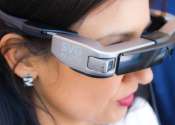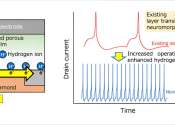'Smart' glasses skew power balance with non-wearers, say researchers
Someone wearing augmented reality (AR) or "smart" glasses could be Googling your face, turning you into a cat or recording your conversation—and that creates a major power imbalance, said Cornell researchers.
Aug 28, 2023
6
300









